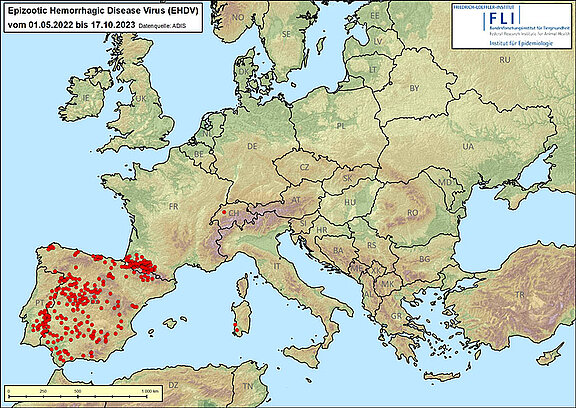On 10 October, Switzerland confirmed the infection of a calf in the canton of Bern with the "Epizootic Hemorrhagic Disease Virus (EHDV)". The outbreak is only about 60 kilometers away from the German border. Further cases in Switzerland are to be expected. The source of introduction of the outbreak is unclear, as the outbreaks reported so far in Europe are quite some distance away from the canton of Bern.
The veterinary laboratories of the federal states have been informed by the National Reference Laboratory for EHD at the Friedrich-Loeffler-Institut about diagnostic possibilities of direct and indirect virus detection.
Like the closely related bluetongue virus, EHDV is transmitted by biological vectors, mainly biting midges, and affects ruminants. Besides the particularly susceptible white-tailed deer in North America, cattle in particular can also become infected with EHDV. Sheep and goats are much less frequently affected. Whether the virus can also infect European wild ruminants such as roe deer or other native deer species and lead to more severe diseases in these species is still unclear. Basically, the symptoms of the disease in domestic ruminants are similar to those of bluetongue, but the course of the disease is usually milder. Fever, weakness and respiratory problems may occur. The disease leads to reduced performance, but rarely to death. Like bluetongue, EHD is only affecting animals and cannot be transmitted to humans.
EHDV has been spreading in Europe since November 2022, with the first outbreaks reported in Italy (Sardinia) and Spain. The EHDV diagnosed there was assigned to serotype 8. This EHDV-8 has meanwhile also been detected in Portugal and southern France. It is very likely that this EHDV-8 strain is also present in Switzerland, even though it has not yet been officially confirmed. Since EHDV is transmitted by biting midges and there is currently no approved vaccine, there are hardly any options for targeted control.



